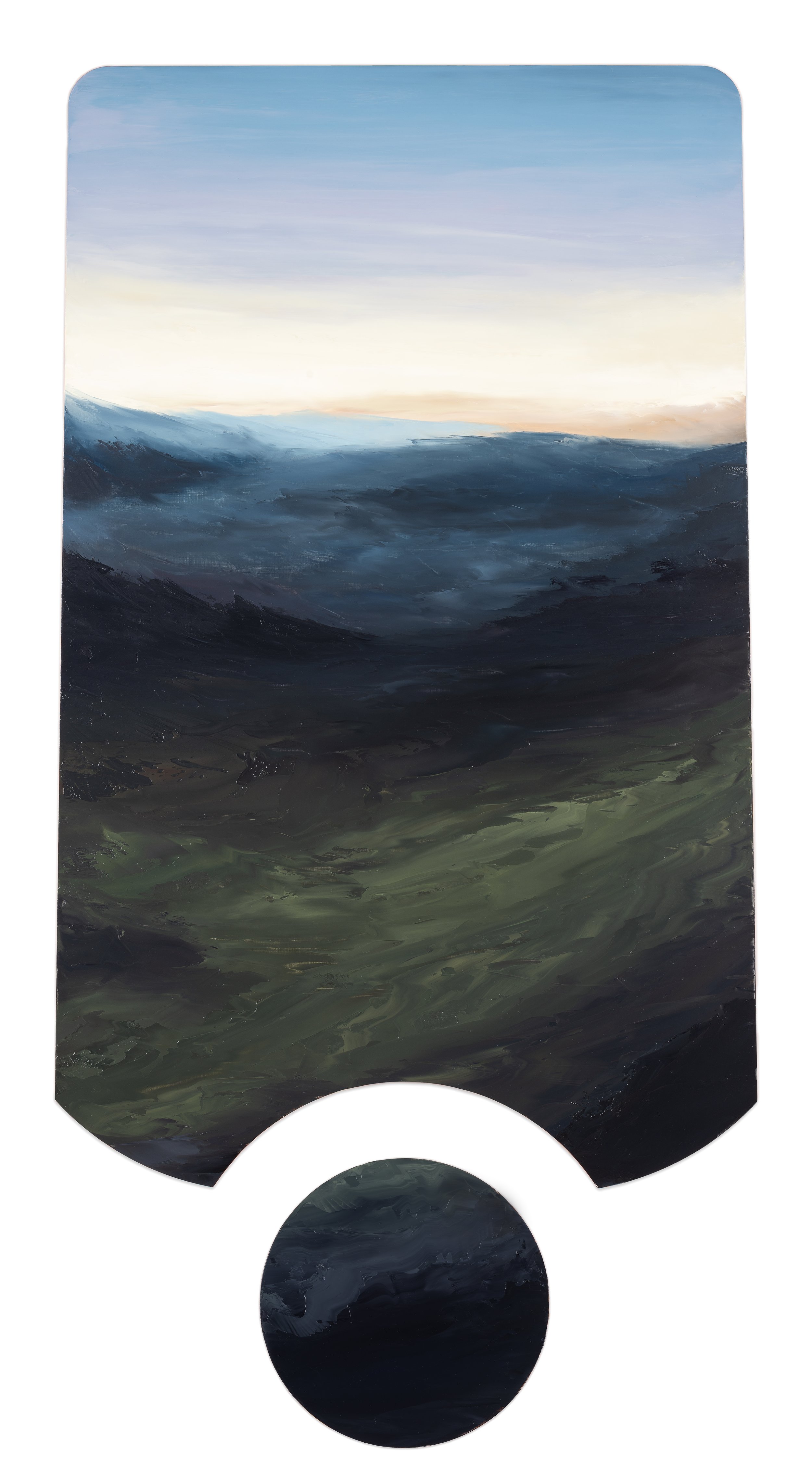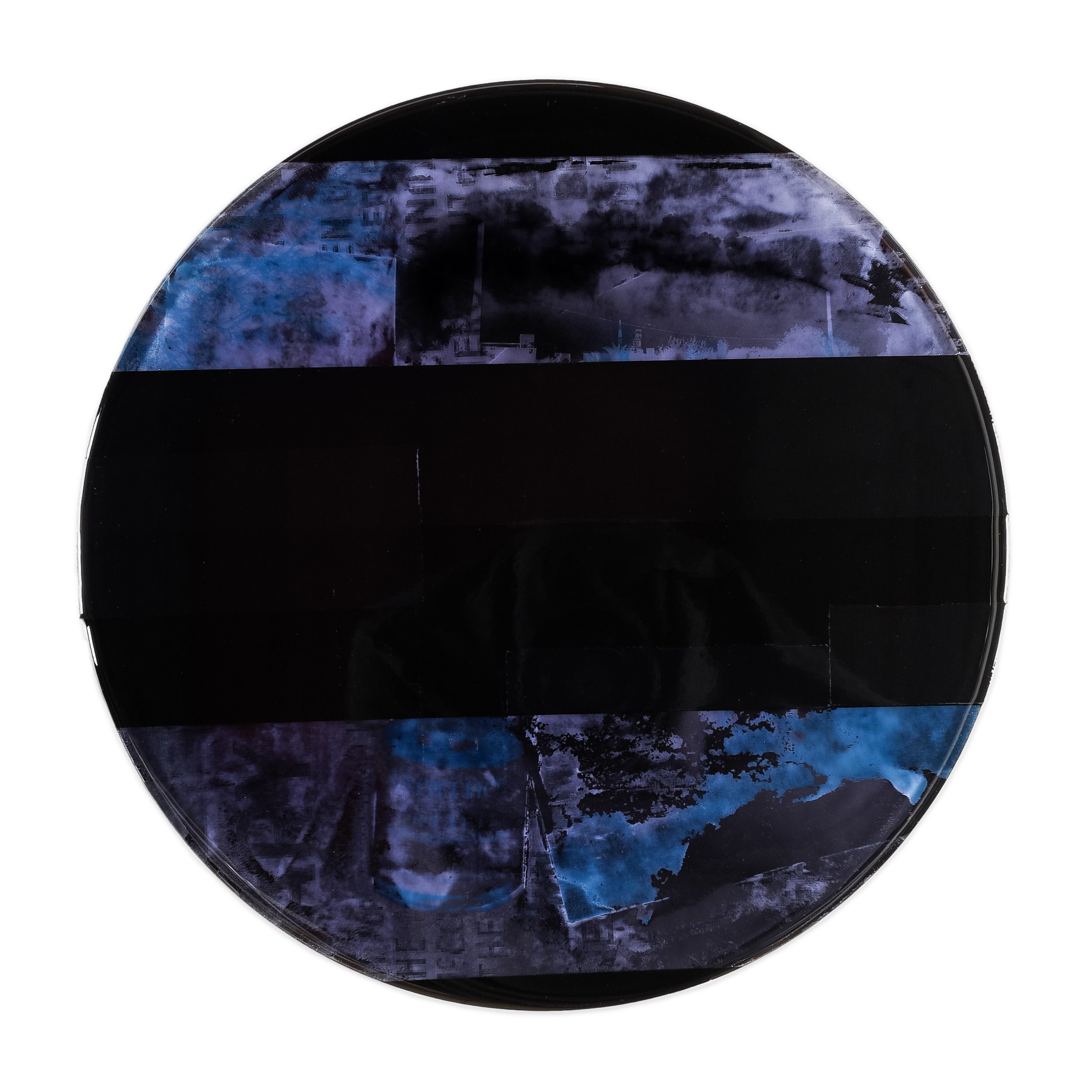'Yellowcake'
All that you touch, you change, all that you change, changes you
Lee Wilkes focuses on this central idea of change as we speak about Uranium and the Mary Kathleen Mine site — the focus of his work for Yellowcake. Octavia Butler's mantra for change as a fundamental force seems fitting here in this context — we change things for progress, profit, and the greater good, but as we do so, we, too, are changed. Newtonian reasoning on an environmental stage.
It's a vital ideology that informs this body of work — which ultimately focuses on the scarred imagery of the open cut mine, deep blue pools left by excavation, the broken remains of a disappeared town and the dust-tinged panorama of the surrounding ranges. The first Uranium was found here in the early 50s, and in a short timeframe, the township was changed from a settlement of prospectors to a thriving service industry for Rio Tinto's Mary Kathleen Uranium Ltd. The deposits of Uranium found here were also created through a process of change in the mineral properties of the rock, and in Wilkes' studio, surrounded by the body of work as he wraps up before the installation of Yellowcake, we discuss how Uranium has also changed us, awfully at first, with disfigurements — but with care now — in the treatment of cancers. Perhaps more recently and awfully again, as the key ingredient in atomic weapons.
It's a fascinating subject, and Wilkes speaks with genuine excitement about his research and his time on the ground at Mary Kathleen, now an odd off-road tourist destination. It's a testament to his artistry to see how aspects of his experience exploring this place have informed each part of this work. There's a fixation here on the circular, as singular and as a fragment, removed from the whole. Wilkes designs the large, shaped aluminium surfaces himself. Aside from the obvious references to the mining process, the circles here are of the machine; they are dials, wheels and heavy continuous track, but also a delicate motif for time itself, from dust to dust returned.
A multi-disciplinary artist, he has also opted for handmade ceramic tile for some of the smaller works, where hints of orange show through delicate atmospheric oil. He explains that tiles were often glazed orange with uranium products in the past and that today, the Mary Kathleen township remains marked out by tiles still cemented in place, long after the buildings were auctioned off and removed. The photographic works in Yellowcake reflect this, with Bank Tiles (Mary Kathleen Township), and 'Cyclic Transformation #5', portraits of the broken checkerboard tile of the town's Bank. 'Cloud Capture', the hero work from the collection, is one of such handmade tile compositions. It's a morning sky balanced on a circular counterpoint, haloed by a single delicate cloud.
'Yellowcake' is impressive in its delicacy, considering the subject and Wilkes' use of industrial materials. The geometry-driven surface feels perfectly balanced beneath fragile palette knife impressions of such a consequential industry. Wilkes has presented an exciting approach to capturing the narrative of this place, of the mine and its interesting entanglement with change.
Essay by Jess McNicol




















